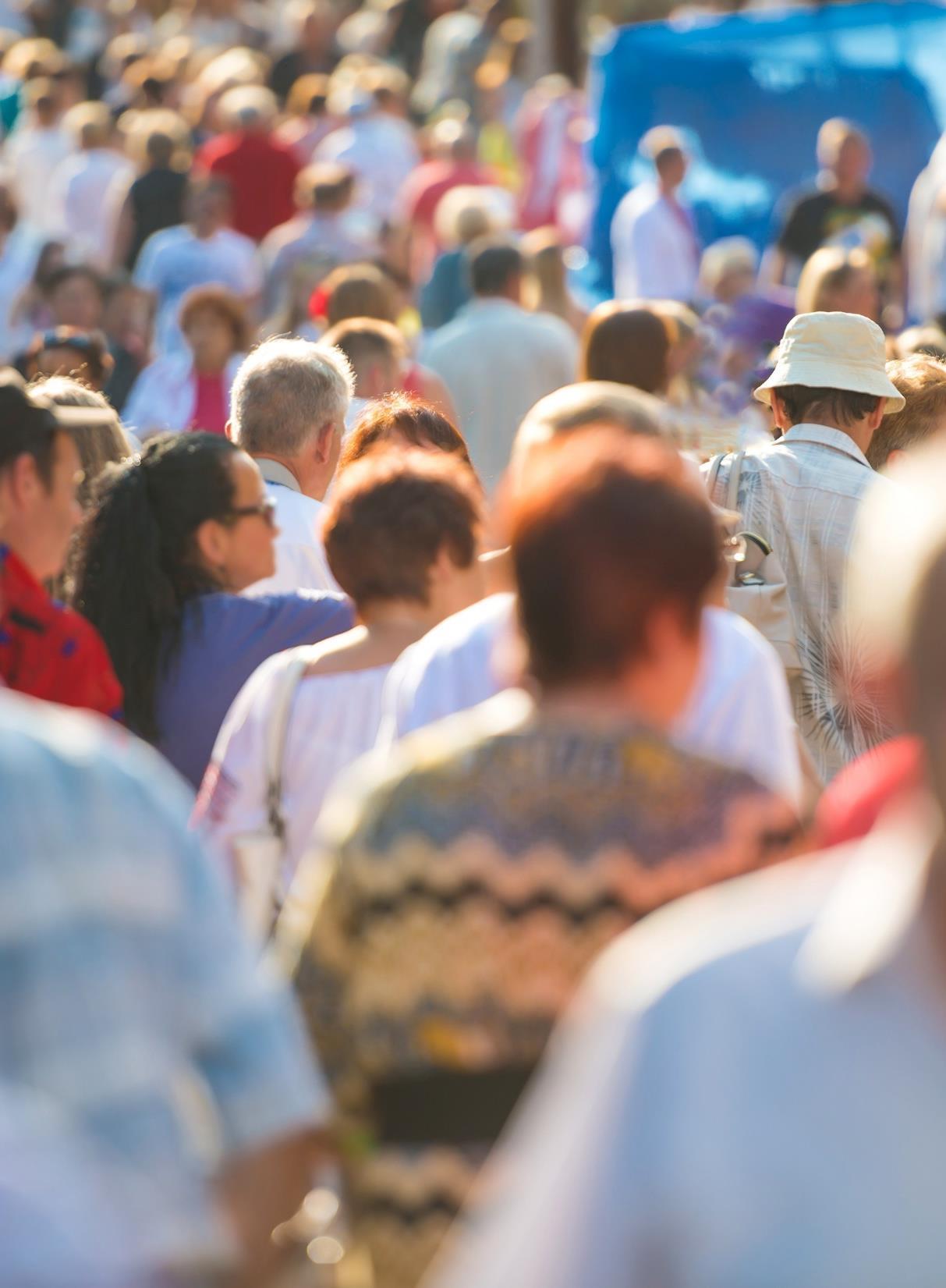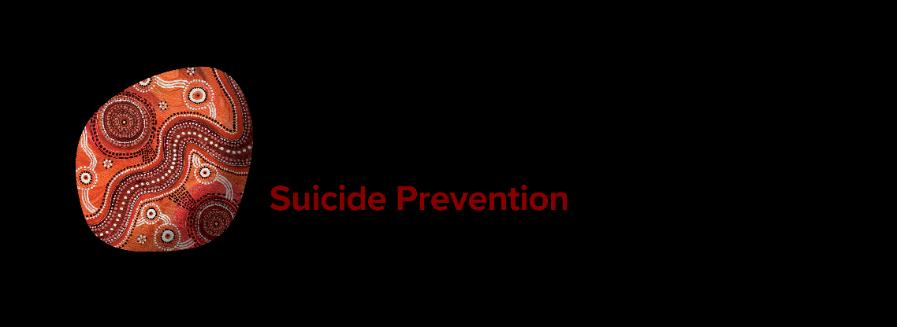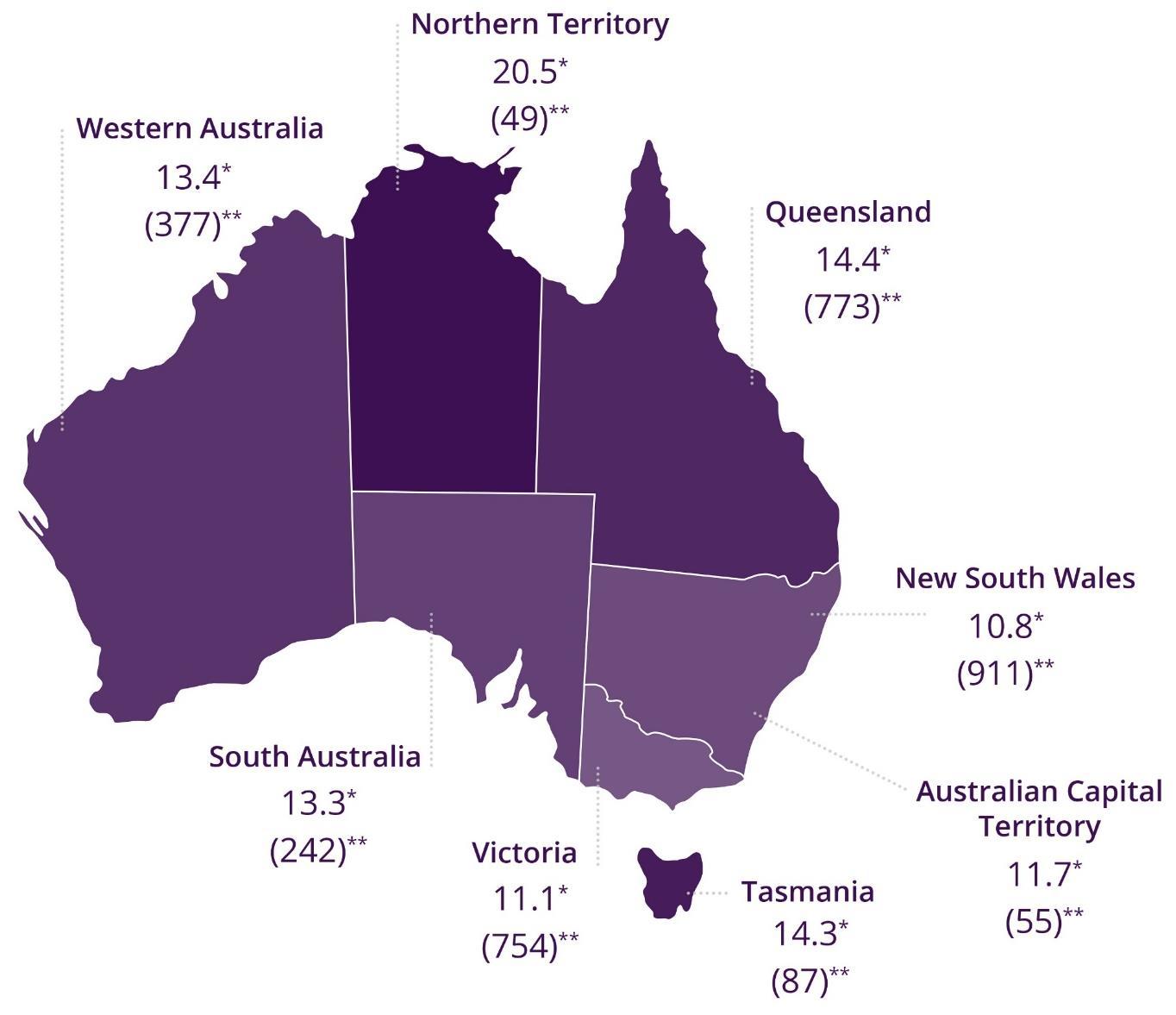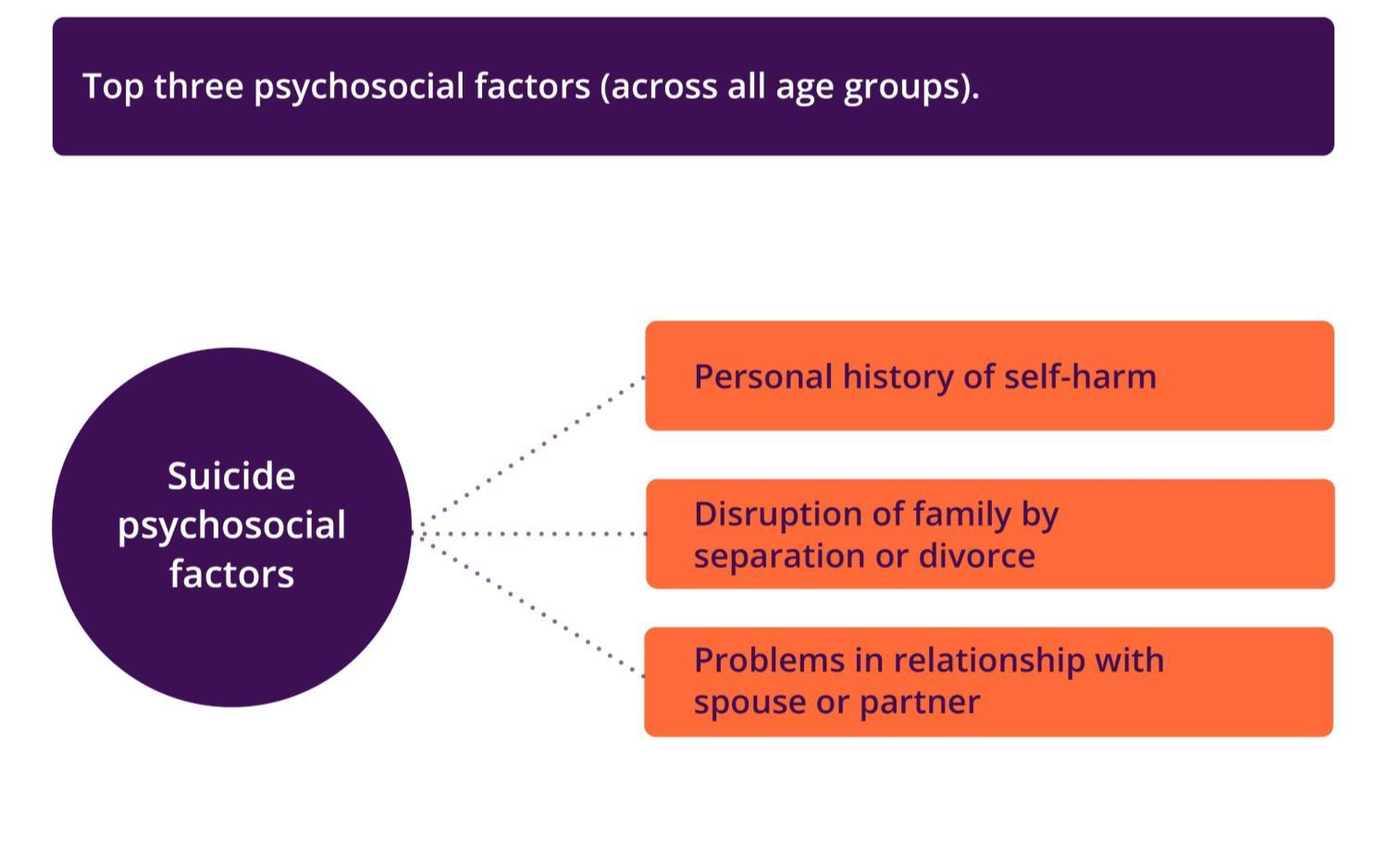

Context
When exploring suicide data, it is important to remember that behind the numbers are individuals, families and communities impacted by suicide in Australia.
• This snapshot was prepared by Everymind using the Australian Bureau of Statistics (ABS) Causes of Death (Catalogue No. 3303.0) data, released 27 September 2023.
• Resources to support reporting about suicide, including the use of images, are available at mindframe.org.au
• A full summary of data will be hosted on the Life in Mind portal at lifeinmind.org.au
Notes about the data
• This release includes 2022 preliminary data, 2021 preliminary revised data and 2020 revised data. Data for 2013 to 2019 are considered final.
• From 2022, data is presented by the year deaths were registered. In previous years, data was presented by the reference year. This change is applied from 2013 onwards.
• Care should be taken in comparing 2022 data to:
- Previous years, as some data has been subject to quality improvement processes.
- Pre-2006 data, as this data was not subject to the revision process.
• In 2022, the process for identifying Aboriginal and Torres Strait Islander deaths in NSW has improved. Comparisons with previous years should be made with caution.
National summary
• In 2022, there were 3,249 deaths by suicide with an age-standardised rate of 12.3 per 100,000.
• There were 2,455 male deaths with an age-standardised rate of 18.8 per 100,000.
• There were 794 female deaths with an age-standardised rate of 5.9 per 100,000.
Data sourced from the Australian Bureau of Statistics (ABS) Causes of Death data on 27.09.2023.

*Age-standardised rate per 100,000.
** Number of deaths.
National summary 2022
In 2022, there were 3,249 deaths by suicide with an age-standardised rate of 12.3 per 100,000.
2021 2020
This equates to an average of 8.9* deaths by suicide in Australia each day.
In 2021, there were 3,166 deaths by suicide with an age-standardised rate of 12.1 per 100,000. This equates to an average of 8.7* deaths by suicide in Australia each day.
In 2020, there were 3,196 deaths by suicide with an age-standardised rate of 12.3 per 100,000. This equates to an average of 8.8* deaths by suicide in Australia each day.
There were 2,455 male deaths at an age-standardised rate of 18.8 per 100,000. There were 794 female deaths at an age-standardised rate of 5.9 per 100,000.
There were 2,375 male deaths at an age-standardised rate of 18.3 per 100,000.
There were 2,420 male deaths at a age-standardised rate of 18.8 per 100,000.
There were 791 female deaths at an age-standardised rate of 6.1 per 100,000.
*This is calculated by Everymind and we recommend using with caution. Note: 2020 data have been subject to revision; 2021 data are preliminary revised; and 2022 data are preliminary.
There were 776 female deaths at an age-standardised rate of 5.9 per 100,000.
General summary
• The suicide rate for males increased by 2.6% between 2021 and 2022.

• The suicide rate for females decreased by 2.3% between 2021 and 2022.
• Young and middle-aged people were more likely to die by suicide than those in older age cohorts.
• 81.7% of people who died by suicide were aged under 65 years.
Data sourced from the Australian Bureau of Statistics (ABS) Causes of Death data on 27.09.2023.
*Age-standardised rate per 100,000.
** Number of deaths.
Note: 2020 data have been subject to revision; 2021 data are preliminary revised; 2022 data are preliminary
General summary: Age-specific suicide rates (2022)
Males by age
• Males aged over 85 years had the highest age-specific suicide rate and accounted for 2.9% of suicides among males.
• Males aged between 45-49 years had the highest age-specific suicide rate of those aged under 85 years, accounting for the largest proportion of deaths due to suicide (10.7%).
• Males aged between 45-49 years had the largest increase in their age-specific suicide rate, from 23.2 deaths per 100,000 in 2021 to 32.6 per 100,000 in 2022.
• Males aged between 80-84 years had the largest decrease in their age-specific suicide rate, from 31.6 per 100,000 in 2021 to 22.2 per 100,000 in 2022.
Age-specific rate per 100,000. 2021 data are preliminary revised; 2022 data are preliminary
Females by age
• In 2022, females aged over 85 years accounted for the highest age-specific suicide rate for the first time since the beginning of the ABS mortality data time series (1968) with a rate of 10.6 per 100,000 females.
• Females aged between 45-49 years had the highest age-specific suicide rate of females aged under 85 years (8.8 deaths per 100,000).
• Between 2021 and 2022, females aged between 70-74 years had the largest increase in their age-specific suicide rate (up 1.7 deaths per 100,000).
Age-standardised suicide rates (1992-2022)
Aboriginal and Torres Strait Islander people: National data
• In 2022, 239 Aboriginal and Torres Strait Islander people died by suicide.

• The median age of death was 33.4 years.
• Using data from New South Wales, Queensland, Western Australia, South Australia and the Northern Territory, the age-standardised suicide rate for Aboriginal and Torres Strait Islander people was 29.9 per 100,000. This is the highest suicide rate in the 10-year time series.
Male Female Persons
Age-standardised suicide rates are compiled from the jurisdictions of New South Wales, QLD, WA, SA and NT.
Aboriginal
and Torres Strait Islander people compared to non-Indigenous people
• Over the period 2018-2022, Aboriginal and Torres Strait Islander people had a suicide rate more than double that of non-Indigenous people.

• The median age for suicides was 33.4 years for Aboriginal and Torres Strait Islander people in 2022 compared to 46.9 years for non-Indigenous people.
Age-standardised suicide rates are compiled from the jurisdictions of NSW, QLD, WA, SA and NT. Due to changes in Indigenous death identification in NSW in 2022, use caution when comparing to previous years.
State and territory summary
• Between 2021 and 2022, all states except Queensland, the Australian Capital Territory and Western Australia had an increase in the age-standardised suicide rate. New South Wales remained the same.

• Three-quarters of people who died by suicide had a usual residence of New South Wales (911), Queensland (773) or Victoria (754).
• The Northern Territory had the lowest number of people who died by suicide (49) but recorded the highest rate of suicide (20.5 per 100,000 people).
*Age-standardised rate per 100,000. **Number of deaths. Note: 2021 data are preliminary revised; 2022 data are preliminary.
Greater capital cities total and rest of states total
*2018 and 2019 data are final and no longer revised; 2020 data have been subject to revision; 2021 data are preliminary revised; and 2022 data are preliminary
Risk factors
• In 2022, 85.8% of people who died by suicide had at least one risk factor reported, with an average of 3 to 4 factors mentioned.
• Mood disorders (including depression) were the most common risk factor for both males (34.9%) and females (43.3%), and across all age groups except for those 85 years and older.
Top five risk factors across all ages in 2022:
• Mood disorders, including depression (36.9%)
• Suicidal ideation/thoughts (25.7%)
• Problems in spousal relationships circumstances (25.1%)
• Personal history of self-harm (21.5%)
• Anxiety and stress related disorders (17.5%).
Psychosocial risk factors

• Psychosocial risk factors are social processes and social structures that can interact with a person’s thoughts, behaviour or health.
• In 2022, 68.3% of suicide deaths
(67.4% for males and 71.3% for females) in Australia were found to have at least one psychosocial risk factor.
• Psychosocial risk factors associated with suicide were largely age dependent and differed throughout the lifespan.
Data sourced from the Australian Bureau of Statistics (ABS) Causes of Death data on 27.09.2023. Total occurrences in 2022. Factors can be co-occurring.
Suicide in the COVID-19 pandemic
There were 84 people (2.6% of all suicide deaths) who had the COVID-19 pandemic mentioned in either a police, pathology or coronial finding report.
For people with issues relating to the COVID-19 pandemic, it did not appear as an isolated risk factor. They had, on average, 6.5 risk factors mentioned including 3.5 psychosocial risk factors.
For the 84 people who died by suicide with issues relating to the COVID-19 pandemic as a risk factor:
• 47.6% also had problems related to employment and unemployment
• 46.4% also had a mood disorder (including depression)
• 35.7% also experienced suicidal ideation (thoughts)
• 27.4% also had anxiety and stress related disorders
• 25.0% also had problems in spousal relationships
• 25.0% also had chronic alcohol use disorders
• 21.4% also had chronic psychoactive substance use disorders.
Suicide by country of birth
• People from culturally and linguistically diverse backgrounds may have unique experiences in relation to mental health and suicide, including cultural and family views and how health services are accessed.
• In 2022, data on country of birth has been included in the Causes of Death release. While this does not provide complete information on whether a person was part of a culturally and linguistically diverse community, it does provide some additional insight into suicide in Australia.
For the five-year period 2018 to 2022:
• Those who were born in Australia had an age-standardised rate of 14.7 deaths per 100,000 people.
• Those who were born overseas had an age-standardised rate of 8.2 deaths per 100,000 people.
Age-standardised suicide rate by country of birth (2018-2022)
Korea, Republic of (South)
United States of America
Hong Kong (SAR of China)
China (excludes SARs and Taiwan) Sri
Age-standardised suicide rate (per 100,000)
*Country of birth uses the Standard Australian Classification of Countries (SACC).
Help-seeking

